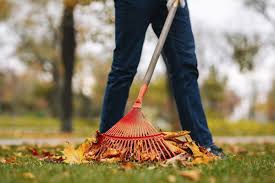Effective brush clearing requires the right balance of technique, tools, and safety measures. Assess the land, choose proper equipment, and use eco-friendly methods to remove overgrowth. Strategic clearing prevents wildfires, enhances landscapes, and supports healthy ecosystems. Regular maintenance keeps land accessible and manageable, ensuring safety, efficiency, and long-term environmental benefits. Proper planning leads to effective and sustainable results.
Introduction to Brush Clearing
Brush clearing is an essential land management component that combines art and science. Understanding the subtleties of this activity can significantly enhance the usability of the land, reduce potential fire hazards, and maintain an ecological balance. Whether you’re interested in Brush Clearing in Broadway or exploring land management options elsewhere, it’s crucial to grasp the nuances involved to achieve optimal results.
Strategic brush clearing enhances property visual appeal and prevents invasive species from encroaching, allowing native flora to thrive. This practice fosters a healthier environment, emphasizing the need for informed and mindful brush management techniques.
The Benefits of Clearing Brush
Clearing brush offers numerous advantages that extend beyond aesthetics. These include improved land usability, fire prevention, and enhanced biodiversity. By reducing the fuel loads present in dense undergrowth, landowners can create safer environments that help prevent the outbreak of wildfires. Moreover, brush clearing opens the land for various productive uses, ranging from agriculture to recreational purposes.
According to the National Wildfire Coordinating Group, effective brush management is pivotal in decreasing the intensity and spread of fires. Effective clearing protects the landowner’s investment and enhances community safety by mitigating one of nature’s most devastating phenomena—wildfire.
Tools and Techniques for Effective Clearing
The efficiency of brush clearing largely depends on the tools and techniques employed. Traditional hand tools such as machetes, pruners, and loppers might suffice for small-scale projects. However, powered machinery like brush hogs, mulchers, and skid steers become indispensable for more extensive, densely vegetated expanses. A more efficient operation is made possible by using the appropriate collection of tools depending on the terrain and the unique difficulties it poses.
Methods such as controlled burning, mechanical cutting, and mulching are commonly used, depending on the specific vegetation targeted and the landowner’s end goals. Each technique has its advantages and drawbacks, and often, a combination of methods may be required for comprehensive and effective brush clearing.
Environmental Considerations
One cannot overlook the need to maintain ecological balance when clearing brush. It’s crucial to assess the impact on local wildlife and vegetation and incorporate sustainable practices. Sustainable clearing ensures the preservation of wildlife habitats and supports biodiversity by enabling native plant species to flourish.
The Environmental Protection Agency provides valuable guidelines on conducting environmentally responsible brush-clearing activities. Their recommendations aim to ensure that such projects align with conservation efforts, benefiting the broader ecosystem. Balancing land management goals with ecological concerns provides dual benefits of productive land use and environmental stewardship.
Safety Measures to Follow
Safety should be a top priority when engaging in brush-clearing activities, regardless of the scale of operations. Personal protective equipment (PPE) such as gloves, safety glasses, durable boots, and helmets are essential for minimizing risk. Before commencing any work, conducting a thorough site evaluation is vital to identify potential hazards, such as uneven ground or unforeseen wildlife.
Routine checks of the equipment and its operational condition and proper training for all personnel involved help minimize accidents. It’s equally important to monitor weather conditions—working under high temperatures or during strong winds could introduce unnecessary risks associated with equipment operation or increased fire hazards.
DIY or Professional Services?
Several factors influence the choice between a DIY approach and hiring professional services for brush clearing. These include the terrain’s size and layout, the vegetation’s complexity, the available equipment, and the expertise of those doing the clearing. While smaller and more accessible areas might lend themselves to a DIY approach, larger parcels with dense or stubborn growth could benefit from professional intervention.
Professional services bring specialized equipment and expertise and offer experience managing necessary permits and adhering to local regulations. Their skills ensure effective clearing, minimizing environmental impact while maximizing the usability of the land.
Frequently Asked Questions
- How often should brush clearing be done? The answer can vary based on vegetation growth rates and environmental conditions, but a general guideline is every 1-3 years or as needed.
- What legal considerations should be kept in mind? – Local regulations often govern permits and environmental considerations, so consulting with local authorities before beginning major projects is crucial.
- Can brush clearing enhance property value? Certainly, improving the aesthetics and functionality of the land can positively impact property values.
Conclusion
Effective brush clearing is critical to both property management and ecological conservation. By taking a well-informed and strategic approach, property owners can enhance safety, increase the usability of their land, and support vital ecosystems. Whether opting for personal or professional clearing methods, understanding the intricacies of the process ensures rewarding outcomes for both the landowner and the broader environment.

